
Beginning in 1984, Amazing Heroes magazine offered special preview issues twice yearly of everything to be published in the near future. You can imagine the folks gathering these previews calling up editors throughout the industry, offering them the chance to push their upcoming product to direct market customers. What I love most about these issues isn't the stuff that saw print, but all the behind-the-scenes machinations, and especially the intentions that were never realized.
For instance, here's January 1, 1985's Amazing Heroes #62, published at a time when Aquaman's four-issue mini-series miraculously materialized without a stated editor (i.e. someone to proofread spearhead Pozner...)
AQUAMAN
written by NEAL POZNER
drawn by CRAIG HAMILTON
edited by [undetermined]
published by DC COMICS
four-color. 75 cents, monthly Mini-Series (four issues)
Following in the footsteps of The Atom, one of DC's oldest characters, Aquaman, will get another shot at greatness with a four-issue mini-series that will change his life around.
Under the helm of new talents Neal Pozner (who has been working as DC's Design Director for several years) and Craig Hamilton, Aquaman will focus on the fantastic aspects of Atlantis, and will provide new insight into Aquaman's origin and his relationship with his brother, The Ocean Master.
A strong effort will be made to tie Aquaman in with the rest of DC's continuity, both past and current. To insure the former, Pozner has gone back and read every one of Aquaman's appearances since his creation in the '40s—and as for the latter, the mini-series will be closely tied in with Justice League of America; Pozner also hopes to link it to the upcoming Crisis on Infinite-Earths series.
As for the plot of the series, Pozner says, "The Ocean Master attacks Aquaman in New Venice. It is the struggle between the two of them that is central to the whole series. Their conflict serves to show aspects of each of their personalities, and as they come into conflict, they're forced to question things about themselves, so their personalities and perceptions start to change as a result of that."
Pozner will also be dealing with all the diverse Atlantis-associated civilizations that have been created in DC. "There is a whole universe of different cultures that exists down there, and we're going to try to play off that."
Craig Hamilton, who is drawing the series, is a new discovery. In fact, Pozner discovered him twice without knowing it: First he saw some of his art at his friend Klaus Janson's house, and suggested that he would be terrific for the Aquaman mini-series. A week later, in Dick Giordano's office, he ran across some other pages he liked and suggested to Giordano that this artist would also be ideal for the series —and this turned out to be Hamilton's work as well!
It should come as no surprise, then, that Pozner is very happy with the way the work has been going— and with Hamilton's deep involvement in the series. "He's even gone so far as to reason how the Atlantean drapery would hang in a room —or float" Pozner relates. "He's got steel balls hanging at the bottom of his curtains." Hamilton is also being careful to avoid drawing any normal household items that would be useless underwater—such as cups and drinking glasses.
"The Aquaman who emerges at the end of the series," Pozner promises, "will be a very different one from the one who begins the series." That promise alone should make most old-time DC fans want to pick up the series. —JC
Nothing wrong there, but things take a dubious turn in the Summer 1985 Amazing Heroes Preview Special #1...
AQUAMAN
Written by NEAL POZNER; pencilled by CRAIG HAMILTON; Inked by STEVE MONTANO; edited by ALAN GOLD
32 four-color pages on Mando newsprint; 75 cents; newsstand distribution; published monthly by DC COMICS, INC.; concludes with the 50th issue
Writer Neal Pozner hopes to make the continent of Atlantis more of a coherent fantasy world, like a high tech Emerald City, in his four-issue Aquaman mini-series. "It's a romantic environment," he says, "where you can never forget you're underwater." Artist Craig Hamilton draws Atlanteans' hair and clothing moving and, except for the first part of the first issue, all of the action takes place in the sea. Pozner feels that minute details, such as having metal ball bearings at the bottom of Atlantean curtains to hold them down, demonstrate that "more thought has been given to the fact that this an alien environment."
The mini-series is "very heavy on Atlantis politics," Pozner says, "and the ramifications of a civilization that for 4,500 years has been in isolation." He makes the analogy between the cultures of Atlantis and 19th century Japan before Commodore Perry opened it to the West. Aquaman decided, back when he was king, to open up Atlantis's civilization to the oversea world. Since Atlanteans were not used to the influx of new ideas, a cultural backlash is beginning to take place.
In the course of the adventure, Aquaman "becomes involved with two other undersea cultures, one from the old Skeates-Giordano days, and one new. Several new characters are introduced that, in my feeling, are going to become important parts of the DC Universe." Old characters also make appearances, such as Aquaman's half-brother Orm, the Ocean Master, and his wife Mera.
In no way, says Pozner, do the ideas introduced in the mini-series contradict continuity, but at the same time you don't have to know what's gone on before. People who do remember the Aquaman series of the '50s, '60s, and '70s "will have this added plus of saying, 'hey, I know him.'"
The mini-series is tied in with Aquaman's appearances in The Justice League, and features a small cross-over with Crisis on Infinite Earths. Pozner notes that JLA writer Gerry Conway has been playing up Aquaman's self-important qualities in preparation for the mini-series.
As for Aquaman himself, "I've never found him a very likeable character the way he is now. He's been a snotty, arrogant person, and we're trying to figure out why. In the series he has to face some things about himself that he's never had to face before." The third issue flashes back to Aquaman's origin, to "re-examine who he is. It's an amplification, not just a listing of what's happened to him in the past. It makes the character three-dimensional and gives him motivation and explanation."
Pozner has nothing but praise for artist Craig Hamilton. "Craig has just finished pencilling #2, and his pencils are getting better and better with each page. Everyone has been real pleased with it up at the office. It's really beautiful stuff." The first issue has been inked by Steve Montano, who's doing "a real nice job."
What that "concludes with the 50th issue" at the top means would require speculation. Maybe the mini-series was meant to be extended to a fifth part, in which some of the promises made above were actually paid off. I'd think most anyone who read this painfully written mini-series could attest to the dashed hopes and simple badness within. Just ask The Comic Treadmill, which eviscerated issue #1 through issue #4.
Let's continue to Amazing Heroes Preview Special #2 from Winter 1986...
DC's Sea King will be finishing up his current mini-series run in the next two months. According to Aquaman editor Bob Greenberger. "Issue #3 is a retelling of Aquaman's origin, set against the current conflict in which he is caught. Neal [Pozner, series writer] has gone out of his way to clarify Aquaman's relationship with his parents, particularly his father. Before, all we knew was that he was a lighthouse keeper—now we know much more about him and his relationship with his wife [and Aquaman's mother] Alanna."
Issue #4 will feature the final conflict between Aquaman and his half-brother, the Ocean Master, "Rather than a physical conflict, their confrontation goes onto an astral plane because of the Ocean Master's current command of magical forces. Everything comes to a head in the finale"
The final three Aquaman covers, pencilled by interior artist Craig Hamilton, will be inked by P. Craig Russell. What, then, will be Aquaman's fate once the mini-series is over? Will it be sink or swim time for the Aquatic Avenger? Says Greenberger, "The mail will dictate how Aquaman will be treated in the future. There are no immediate plans for him to return to the Justice League of America, though he will be on hand for their 250th issue celebration. After that . .?" -mw-
The "mw" who covered this issue was future star scripter Mark Waid, by the way. Where things really get interesting is Amazing Heroes Preview Special #3 from the Summer of 1986...
AQUAMAN II
Written by NEAL POZNER; illustrated by CRAIG HAMILTON; colored by JOE ORLANDO; edited by BARBARA RANDALL
4 or 5-issue mini-series; 32 four-color pages on Mando newsprint; 75 cents; newsstand distribution; published monthly by DC COMICS INC.
After the phenomonal response to DC's first Aquaman series, a sequel seemed a foregone conclusion. Well, here it is. The second mini-series will take place minutes after the first one ends, and will deal with the rest of the "Aquaman Family," as well as the star of the book. "Mera, Aqualad, and the rest of Atlantis did not show up much in the first series," notes writer Neal Pozner, "but they're very important to this series. In the first series, we were trying to change and restructure Aquaman alone. Now we'll see how he's going to react to everybody else. The whole theme of the series is change, and how different people react to it. There have been radical changes in the lives of all the players, and we'll be looking at how those changes manifest themselves, and how each character deals with them. The three main characters will be Aquaman, Mera, and Aqualad, but we'll also be focusing on Makaira, Vulko, a new character named Tawna, Ronal, and (from Swamp Thing) the Sunderland Corporation."
As the series begins, we will find that Makaira (Vulko's wife), is ruling Atlantis in his stead, as he was injured in the fight with Ocean Master. Atlantis is going through a culture shock, as they have been isolated for two thousand years, and now they are interacting with the surface world. The surface world is finding that Atlantis is a great place to get rid of all the stuff it doesn't need and to get all the technology that they do need. Some Atlanteans are so taken with these new ideas, that they'll accept anything. "So they've got hula-hoops and Pac-Man and disco clothes that they're using underwater. There is even a fast-food restaurant that has been opened by the Sunderland Corporation, and the religious zealots use that as a focus for their protests against the surface worlds' imports. Makaira is caught between the religious zealots and the other Atlanteans, in her attempt to rule Atlantis."
Aquaman, meanwhile, is trying to deal with the fact that he loves his wife, and he also seems to love another woman. Also, every rule he's ever lived by, he doesn't believe in anymore, and he will catch himself reverting back to his old actions. "This is not going to be the pat super-hero-gets-a-cosmic-revelation. When he gets mad. he'll lose his temper, except he'll catch himself midway through. Mera is going to have a really hard time also, because the man she married is not the man that returns to her. She's going to have a hard time trying to help, because she was raised having everything she wanted." When Aquaman returns to New Venice, he finds that Mera has basically saved the whole town by herself. "Mera will be portrayed more heroically. In her own way, she is more powerful than Aquaman."
Aqualad will still be mourning Aqua-girl's death, and he will retreat from the surface world to Atlantis. He eventually meets a young girl named Tawna, whom he will fall in love with, "The focus of the series is primarily on Aquaman, Aqualad, and Atlantis, but there will be all these subplots running along in the background. All the subplots are relevant, and intertwined, to some degree."
In issue #2. Aquaman will return to the surface world to visit the Sunderland Corp., at which time he will get his old uniform back. After a slight wimper from this previewer, Pozner pointed out that; "He realizes that he's going to be on the surface world for a while, and he needs his old suit because it's irrigated. Otherwise, he would pass out after an hour. We have a wonderful scene at the beach, where he comes walking out of the surf, and all these people are wondering who he is. When he arrives at Sunderland, they have set up a series of tests for him, to find out just how formidable a foe he will be. These tests show the readers exactly what the limits of Aquaman's powers are out of water. How he gets out of these traps is one of the cliffhangers of #2. The second will be that it appears as if the religious zealots have raised Poseidon to deal justice to the non-believers."
Craig Hamilton is still the artist on the series, which will premiere this fall.
The second mini-series never came into being, as artist Craig Hamilton revealed in an interview at the Aquaman Shrine:
It took eight or nine months to do all four issues. Hot on the heels of that first series, they wanted me to come back and do a second one, and two months in, I only had like four or five pages drawn. I was exhausted, I was empty. Great pages--the drawing was so much better, the storytelling was so much better--but I just couldn't pull it out, and they canned it.
The mini-series was subsequently retconned out of continuity Post-Crisis. It's a curious thing, because if nothing else, the forward progress made with the character was embraced by fandom. For some reason, there's a lot of people who think Aquaman is lame. Many hate him on sight based on his costume, largely because of the color scheme. I don't see why he should wear blue any more than urbanites should wear gray, but the new suit quieted quite a few of the haters (even if hardly anyone could draw it correctly.) I guess DC's editors assumed the book sold on art alone, and having lost Hamilton, nixed the sequel. Feeling that way, you'd think they would have at least made a point of getting another promising new artist for the follow-up, but the pencillers who followed Hamilton on the sporadic Aquaman projects through the mid-90s were all box office poison. Ultimately, I'm glad a Pozner-written sequel never made it off the ground, as he couldn't seem to get his ideas down on paper outside of interviews, plus his dialogue and characterization were torturous. I do wish DC hadn't set Aquaman on a shelf for the rest of the decade, and had given him more care when they dusted him off for his odd appearances.


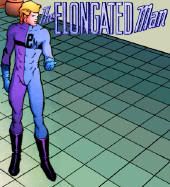
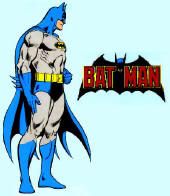
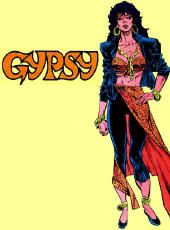

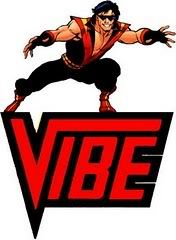
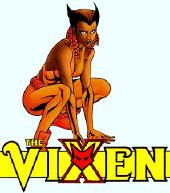

No comments:
Post a Comment